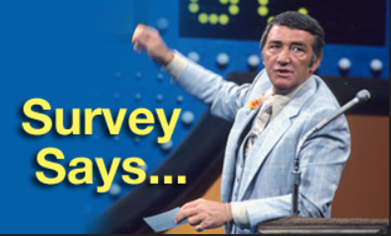eDiscovery Daily Blog
Survey Says! Predictive Coding Technologies and Protocols Survey Results: eDiscovery Trends
Last week, I discussed the predictive coding survey that Rob Robinson was conducting on his Complex Discovery site (along with the overview of key predictive coding related terms. The results are in and here are some of the findings.
As Rob notes in the results post here, the Predictive Coding Technologies and Protocols Survey was initiated on August 31 and concluded on September 15. It’s a non-scientific survey designed to help provide a general understanding of the use of predictive coding technologies and protocols from data discovery and legal discovery professionals within the eDiscovery ecosystem. The survey was designed to provide a general understanding of predictive coding technologies and protocols and had two primary educational objectives:
- To provide a consolidated listing of potential predictive coding technology and protocol definitions. While not all-inclusive or comprehensive, the listing was vetted with selected industry predictive coding experts for completeness and accuracy, thus it appears to be profitable for use in educational efforts.
- To ask eDiscovery ecosystem professionals about their usage and preferences of predictive coding platforms, technologies, and protocols.
There were 31 total respondents in the survey. Here are some of the more notable results:
- More than 80% of responders (80.64%) shared that they did have a specific primary platform for predictive coding versus just under 20% (19.35%), who indicated they did not.
- There were 12 different platforms noted as primary predictive platforms by responders, but only three platforms received more than one vote and they accounted for more than 50% of responses (61%).
- Active Learning was the most used predictive coding technology, with more than 70% of responders (70.96%) reporting that they use it in their predictive coding efforts.
- Just over two-thirds of responders (67.74%) use more than one predictive coding technology in their predictive coding efforts, while just under one-third (32.25%) use only one.
- Continuous Active Learning (CAL) was (by far) the most used predictive coding protocol, with more than 87% of responders (87.09%) reporting that they use it in their predictive coding efforts.
Rob has reported several other results and provided graphs for additional details. To check out all of the results, click here.
So, what do you think? Do any of the results surprise you? Please share any comments you might have or if you’d like to know more about a particular topic.
Also, if you’re going to be in Houston on Thursday, September 27, just a reminder that I will be speaking at the second annual Legal Technology Showcase & Conference, hosted by the Women in eDiscovery (WiE), Houston Chapter, South Texas College of Law and the Association of Certified E-Discovery Specialists (ACEDS). I’ll be part of the panel discussion AI and TAR for Legal: Use Cases for Discovery and Beyond at 3:00pm and CloudNine is also a Premier Platinum Sponsor for the event (as well as an Exhibitor, so you can come learn about us too). Click here to register!

Image Copyright (C) FremantleMedia North America, Inc.
Sponsor: This blog is sponsored by CloudNine, which is a data and legal discovery technology company with proven expertise in simplifying and automating the discovery of data for audits, investigations, and litigation. Used by legal and business customers worldwide including more than 50 of the top 250 Am Law firms and many of the world’s leading corporations, CloudNine’s eDiscovery automation software and services help customers gain insight and intelligence on electronic data.
Disclaimer: The views represented herein are exclusively the views of the author, and do not necessarily represent the views held by CloudNine. eDiscovery Daily is made available by CloudNine solely for educational purposes to provide general information about general eDiscovery principles and not to provide specific legal advice applicable to any particular circumstance. eDiscovery Daily should not be used as a substitute for competent legal advice from a lawyer you have retained and who has agreed to represent you.

